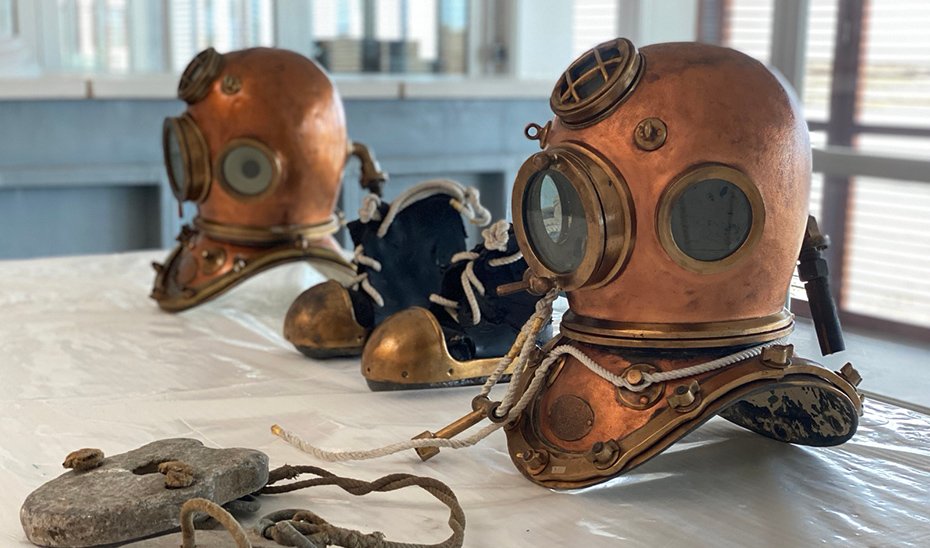The Andalusian Institute of Historical Heritage, under the Ministry of Culture and Sports, has revealed the results of the restoration of a classic diving suit from the first half of the 20th century, owned by the Port Authority of the Bay of Algeciras (Cádiz). The presentation conference was attended by the Government Sub-delegate in the Campo de Gibraltar, Javier Ros, the territorial delegate of Tourism, Culture, and Sports, Tania Barcelona, the president of the APBA, Gerardo Landaluce, and the director general of the IAPH, Juan José Primo.
The work carried out by the IAPH has allowed, on the one hand, to address the deterioration of the pieces – caused by the fragility of the materials and the passage of time – and, on the other hand, to maintain the structure and shape of the suit for its vertical display, so that those who observe it can see it as if a diver was wearing it.
Due to the diversity of the constituent elements, the interventions have been carried out in the two IAPH headquarters, in Seville and Cádiz. While the Intervention Center, in its workshops at the Monastery of La Cartuja, has carried out treatments on the textile and internally reinforced the suit with polyethylene foam, the Center for Underwater Archaeology (CAS), also under the IAPH, has been responsible for cleaning, stabilizing corrosion, and protecting the metal pieces.
The IAPH workshop also intervened in the waterproofed canvas suit.
The restoration criteria have been based on the previous study and thorough knowledge of the work, as well as the utmost respect for its integrity and cultural values. The recovery of the diving equipment has been achieved with a minimal, strictly necessary intervention, which has used reversible methods and materials tested in heritage conservation.
The Institute’s research indicates that the set could have been manufactured entirely in Barcelona by the company Gimeno Carbonell, a supplier of diving equipment for the Spanish Navy in the mid-20th century and a major contributor to the development of this activity in our country. This hypothesis is confirmed in the case of the diving helmets, which bear the corresponding authorship marks. Probably, the textile support was also made by the same company, which between 1953 and 1957 advertised itself as a manufacturer of «waterproof suit for underwater dives.»
The equipment was used by the diving personnel of the former Junta de Obras del Puerto de Algeciras, an organization that was created in 1906. Their work consisted of repairs to ships, port constructions, and recovery of sunken ships and objects.
It is worth noting that in Cádiz, along with El Ferrol and Cartagena, the first diving school in Spain was established in the 18th century, following the shipwreck of the San Juan de Alcántara in 1786 off the coast of Peniche (Portugal). These three departments of the Navy participated with thirty Spanish divers and five foreigners to recover 150 tons of gold and silver coins.
The classic diving suit from Algeciras is a unique and singular piece in the cultural heritage of Andalusia. In Spain, there are few examples preserved, some in museum collections such as the Massó de Bueu in Pontevedra and the Maritime Museum of Barcelona. All of them are inspired, although evolved and perfected, by the milestone of the first closed diving suit, invented in 1837 and patented by Augusto Siebe.
About the suit, in detail
The suit, made of waterproofed canvas using vulcanized natural rubber, has dimensions of 147 x 189 cm. It is complemented by two diving helmets or bronze and brass helmets, two boots, and a lead scapular, whose weights served as ballast to remain at the bottom of the sea without ascending to the surface.
At the neck opening, it has a rubber joint and twelve holes to fit with the nuts and bolts welded to the helmets. This way, the ensemble was waterproof, and the diver could work in any position, dry and insulated from the cold.

